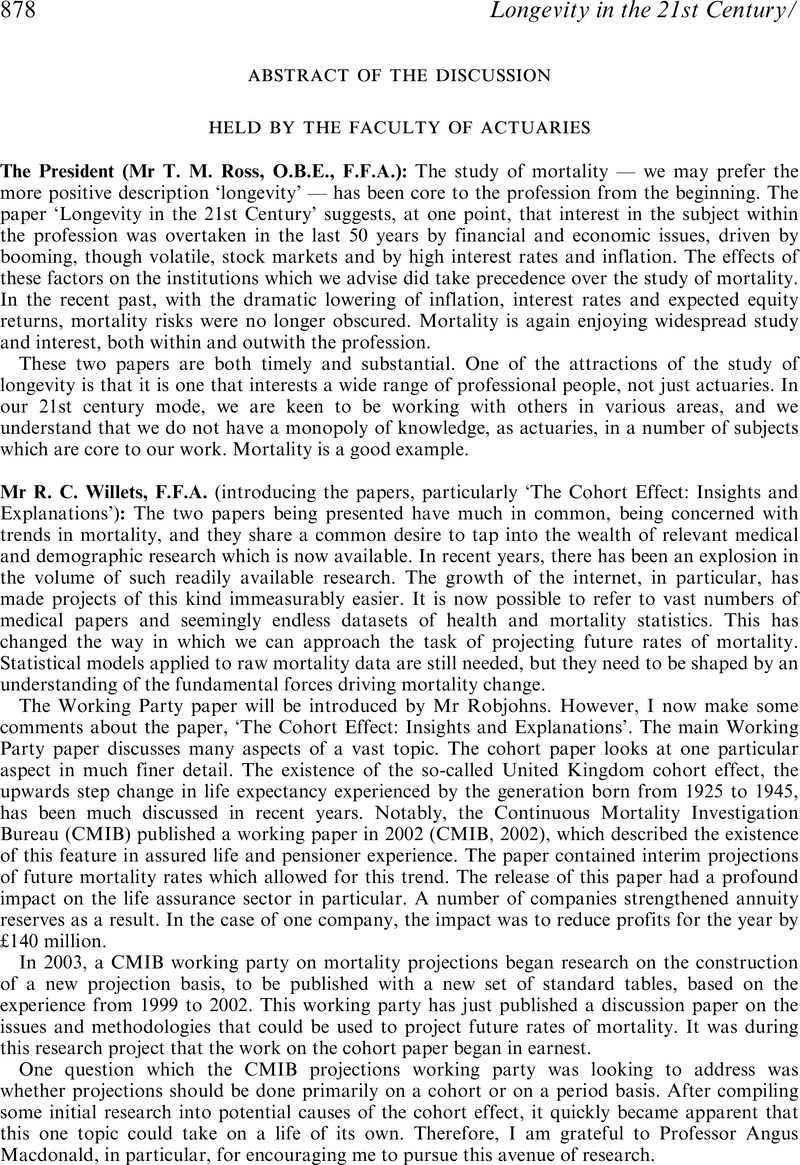No CrossRef data available.
Article contents
Longevity in the 21st Century/The Cohort Effect: Insights and Explanations. Abstract of the Discussion held by the Faculty of Actuaries
Published online by Cambridge University Press: 10 June 2011
Abstract
An abstract is not available for this content so a preview has been provided. Please use the Get access link above for information on how to access this content.

- Type
- Sessional meetings: papers and abstracts of discussions
- Information
- Copyright
- Copyright © Institute and Faculty of Actuaries 2004
References
Anderson, J.L. & Whitehead, D. (1960). The trend of mortality rates in seventeen countries in the last twenty years. Transactions of the 16th International Congress of Actuaries, 2, 379–400.Google Scholar
Giles, P. & Wilkie, A.D. (1973). Recent mortality trends: some international comparisons. Transactions of the Faculty of Actuaries, 33, 375–514.Google Scholar
Gwilt, R.L. (1956). Mortality in the last hundred years. Transactions of the Faculty of Actuaries, 24, 40–176.Google Scholar
Macdonald, A.S., Cairns, A.J.G., Gwilt, P.L. & Miller, K.A. (1998). An international comparison of recent trends in population mortality. British Actuarial Journal, 4, 3–141.CrossRefGoogle Scholar
Haynes, A.T. & Kirton, R.J. (1953). The financial structure of a life office. Transactions of the Faculty of Actuaries, 21, 141–218.Google Scholar
Redington, F.M. (1952). A review of the principles of life office valuations. Journal of the Institute of Actuaries, 78, 286–340.CrossRefGoogle Scholar


